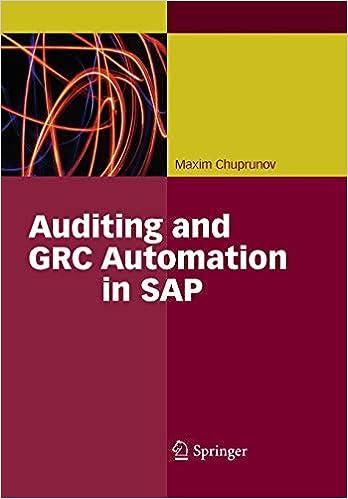Answered step by step
Verified Expert Solution
Question
1 Approved Answer
Your company has issued several financial instruments in the past year and you must determine how to account for these under ASPE and IFRS. The
Your company has issued several financial instruments in the past year and you must determine how to account for these under ASPE and IFRS.
- The first financial instrument was a compensatory stock option plan that was granted to 7 key management positions for the first time. The company wanted to provide these employees with additional compensation and due to financial constraints could not increase salaries. The plan granted these management employees 4,800 options each to purchase shares at $35 each when they were actually worth $70. The options were granted on January 1, 2020 and were exercisable within a three year period beginning January 1, 2023 if the employee was still employed with the company at the time of exercise. A fair value options pricing model determined total compensation to be $780,000. Assume that there are no forfeitures. On January 1, 2023, three employees exercised the options.
- The second financial instrument was a loan from a shareholder. The company borrowed a $3 million dollar loan at a rate of 3% when the market rate of interest was 5%. The company received the lower rate of interest by agreeing that in five years time, the lender would have the option to receive repayment in full in cash or to accept 30,000 common shares as full repayment. Assume the loan was advanced on January 1, 2020.
- On September 1, 2020, your company sold at 102 (plus accrued interest) 3,000 of its $1,000 face value, 10-year, 6%, non-convertible bonds with detachable stock warrants. Each bond carried two detachable warrants; each warrant was for one common share at a specified price of $18 per share. Shortly after issuance, the warrants were selling for $5 each. Assume there is no fair value available for the bonds. Interest is payable on December 1 and June 1. Show both methods.
- The company established a stock appreciation rights program for the president. The program entitled the president to receive cash for the difference between the common shares fair value and the pre-established price of $18 which was the fair value on January 1, 2020 on 20,000 SARs. The date of the grant was January 1, 2020 and the required employment (service period) is two years. Assume the common shares fair value fluctuated as follows: December 31, 2020, $22; December 31, 2021, $21 and December 31, 2022, $24. Assume, also, that the president exercised half of the SARs on January 31, 2023.
- The last item that you need to consider is a contract that your company signed on November 15, 2020 agreeing to purchase 100 bushels of wheat at $120 per bushel. Your company anticipated that the price of wheat would increase significantly. Since the company requires wheat in the production of its product and will need to take delivery of the wheat in the new year, they wanted to reduce the risk of increased costs for the wheat
Required:
- Prepare all the 2020 journal entries to account for the financial instruments under both ASPE and IFRS. For ASPE assume that the company chooses to value the equity component of compound financial instruments at $0. For financial instruments 1 and 5, also show the journal entries for subsequent years.
Step by Step Solution
There are 3 Steps involved in it
Step: 1

Get Instant Access to Expert-Tailored Solutions
See step-by-step solutions with expert insights and AI powered tools for academic success
Step: 2

Step: 3

Ace Your Homework with AI
Get the answers you need in no time with our AI-driven, step-by-step assistance
Get Started


